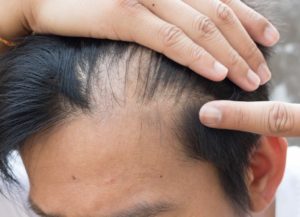Tile floors enhance the appearance of your home and add texture to the kitchen, bathroom, or patio. They may also last a lifetime with proper maintenance, which isn’t that hard. Cleaning your tile floors is fairly easy; use warm water, a cleaning product, and a mop.
Over time, however, the tiles and grout on your floor accumulate germs that would require professional cleaning services. Your floors could be hosting bacteria that may put your health at risk.
A Breeding Ground for Bacteria
Tile floors are common in the kitchen and the bathroom. These areas are also prone to spills, dirt buildup, and bacteria growth. They make your tiles look dirty and promote bacteria growth. Extreme moisture can also result in the formation of biofilm, the slimy texture on your tiles.
Biofilm contains Serratia marcescens (S. marcescens), which is the bacteria that creates a pinkish color. A thick substance holds the bacteria together and sticks them to a surface. Most bacteria live in diverse, dynamic colonies enclosed by an adhesive cell matrix the bacteria made.
Biofilms have certain characteristics that affect household cleaning if not removed properly. For instance,
- They can stain and pit household surfaces that can lead to costly remediation or replacement
- They can spread easily and contaminate other areas
- They are hard to remove without strenuous physical effort
- Bacteria in the biofilm are harder to destroy with sanitizer and disinfectants
How Do Bacteria Get Into Your Home?
You’re likely bringing bacteria to your home through your shoes. If you wear your shoes inside your home, you spread the bacteria they have picked up outside. A study from the University of Arizona reveals that the outside of a shoe has 421,000 units of bacteria, including meningitis, E. coli, and diarrhea.
The study says 90 percent to 99 percent of the bacteria on your shoes directly transfer to your floors. Researchers recommend not wearing shoes inside the home and cleaning the floors regularly.
Deep-Cleaning Your Tile Floor

Cleaning techniques depend on the type of tile you have at home. Each tile requires specific maintenance method to keep its quality. Ceramic tile and porcelain tile floors, for instance, are easier to clean than stone tile floors.
Don’t skip cleaning tile grouts, too. Since it’s porous, it absorbs grease and other stains quite easily. Clean grout makes your tile floors look beautiful and well-maintained.
No matter how much time you spend cleaning your tiles and grout, you might have a hard time removing dirt from deep down. Professional cleaners would do a better job because they have the training and equipment designed to remove tough stains.
Professionals will also apply sealant on the grout to prevent dirt and germs from penetrating. But this protective barrier wears out eventually, so it needs proper maintenance and reapplication.
You might not think about it too much, your floor tiles, unless you look down often. And when you do, you may notice tracked dirt, stains, and marks that may have been there for a long while. Get professionals to sanitize your floors. This way, the surface you use frequently will be as clean as any other surface in your home.














